
Each year during monsoon season, Cambodia's Tonle Sap Lake swells to eight times its normal size, invigorating the country's US$ 2 billion fishing industry and supporting the livelihoods of some 3 million Cambodians. The flooded forest ecosystem that surrounds the lake stores an immense amount of irrecoverable carbon due to the water-logged environment, which slows decomposition rates.

“Irrecoverable carbon” refers to the vast stores of carbon in nature that are vulnerable to release from human activity and, if lost, could not be restored by 2050 — when the world must reach net-zero emissions to avoid the worst impacts of climate change. Learn more about this critical research.
In early 2024, photographer Reuben Wu traveled with Conservation International’s Cambodia team to uncover the story of Tonle Sap. Wu's signature visual language involves using long exposures at night, aerial lighting and light painting to capture otherworldly images of this unique forest ecosystem and the floating villages that dot the lake's surface.
Of the flooded forest trees highlighted in Wu's work, Crudia zeylanica stands out — and not only for its impressive size, with some reaching 147 feet (45 meters) in height and 9 feet (2.8 meters) in diameter. Based on reports from nearby communities, these trees were once more widespread in the flooded forest ecosystem. Today, communities in the Tonle Sap region are working with conservationists to collect seeds and replant these now-rare trees.
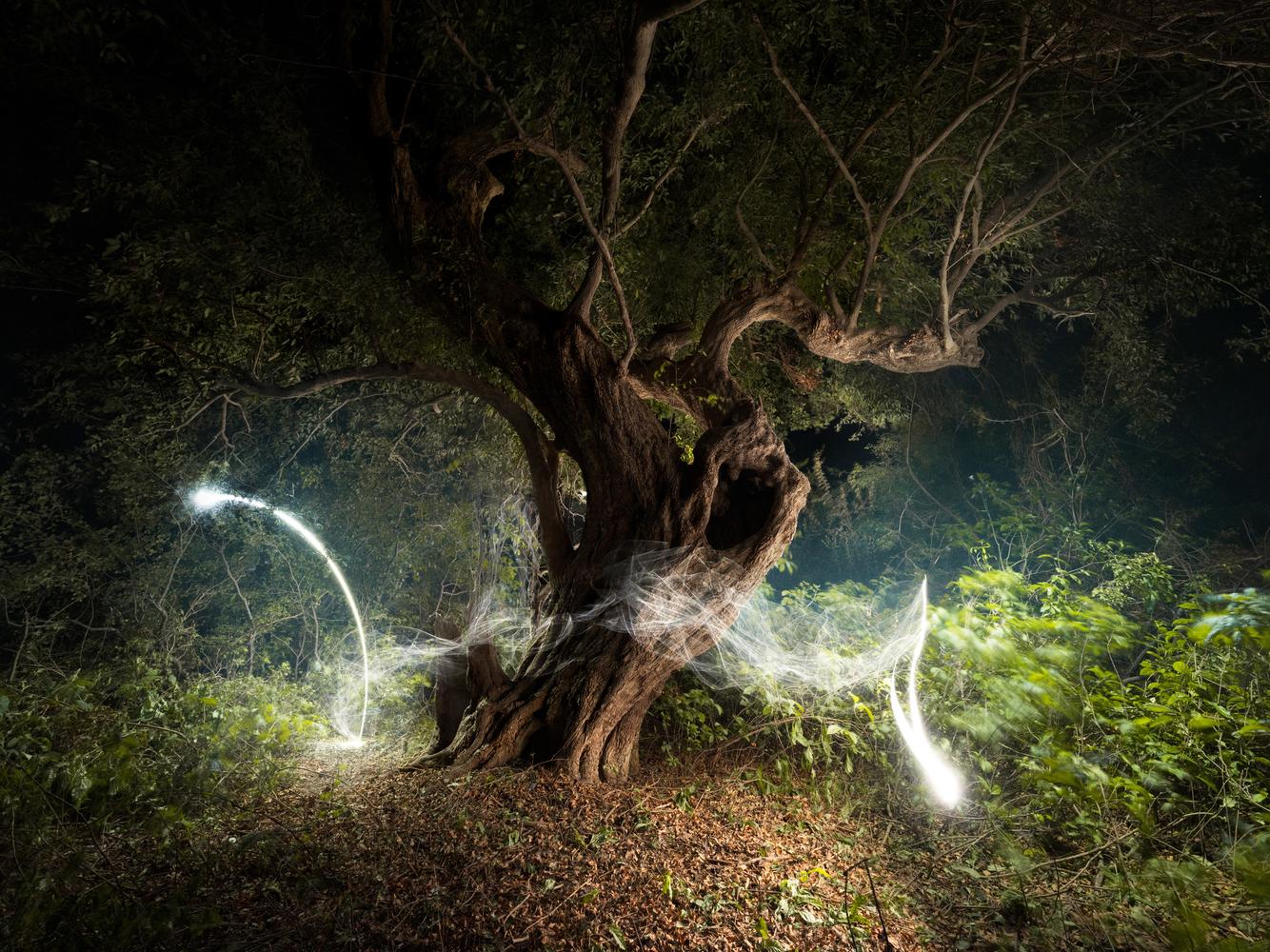
Hidden in the dense jungle at Tonlé Sap, I encountered a twisted and gnarled tree, resembling a contorted ancient spirit. The local villages regard this tree as haunted, which helps prevent unwanted visitors from attempting to cut it down for lumber.
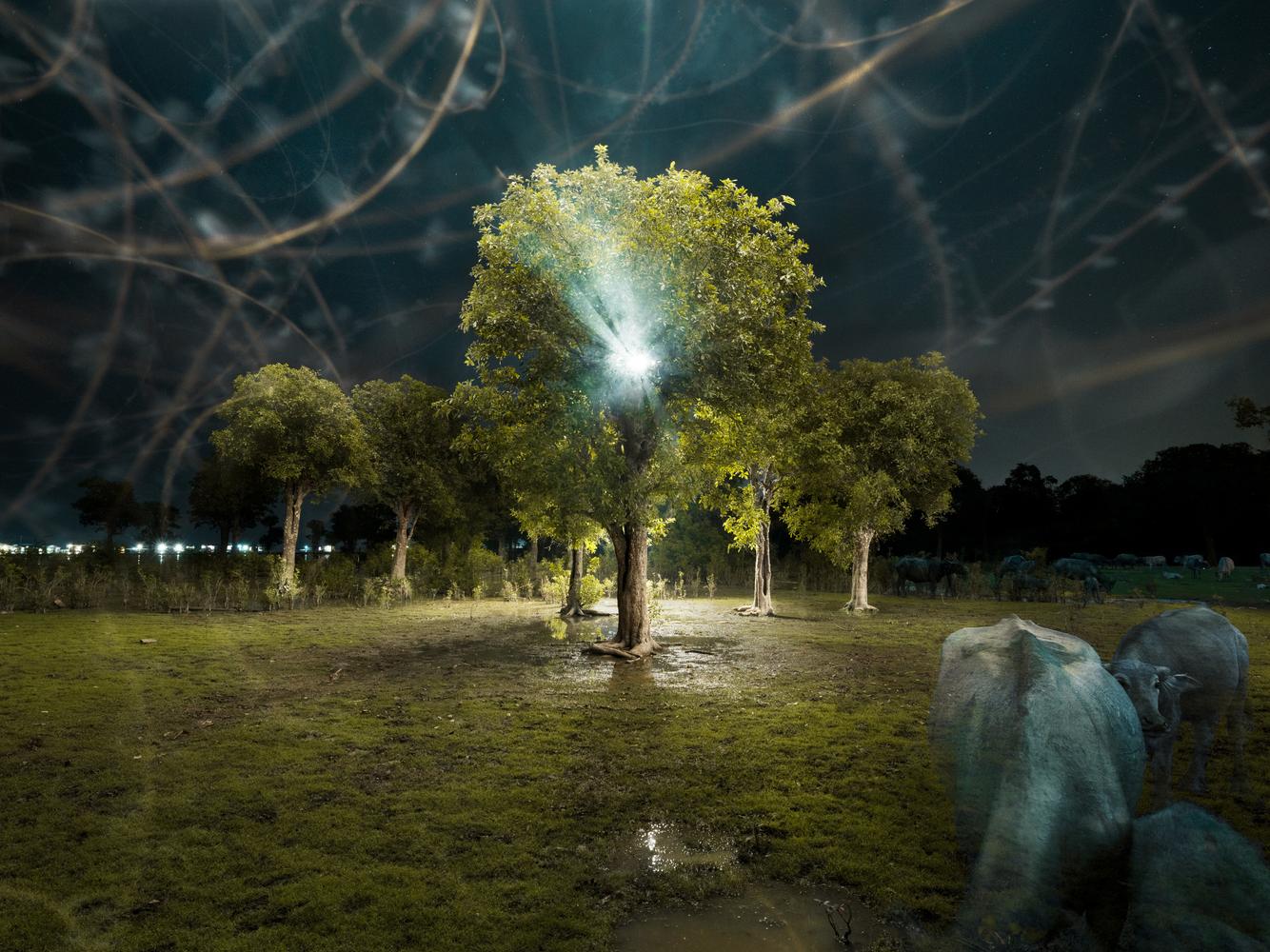
Near the floating village of Kampong Prak, semi-flooded trees stand amidst a swampy wetland populated by grazing cows and water buffalo. Above, a flurry of flying insects filled the air, drawn to the light of my headlamp.

Near the floating village of Srey Chek, a weathered shrine known as a spirit house stands on the bank of one of Tonlé Sap’s many tributaries. Locals offer incense and prayers to honour the gods, its humble appearance belying the profound significance it holds within the community.
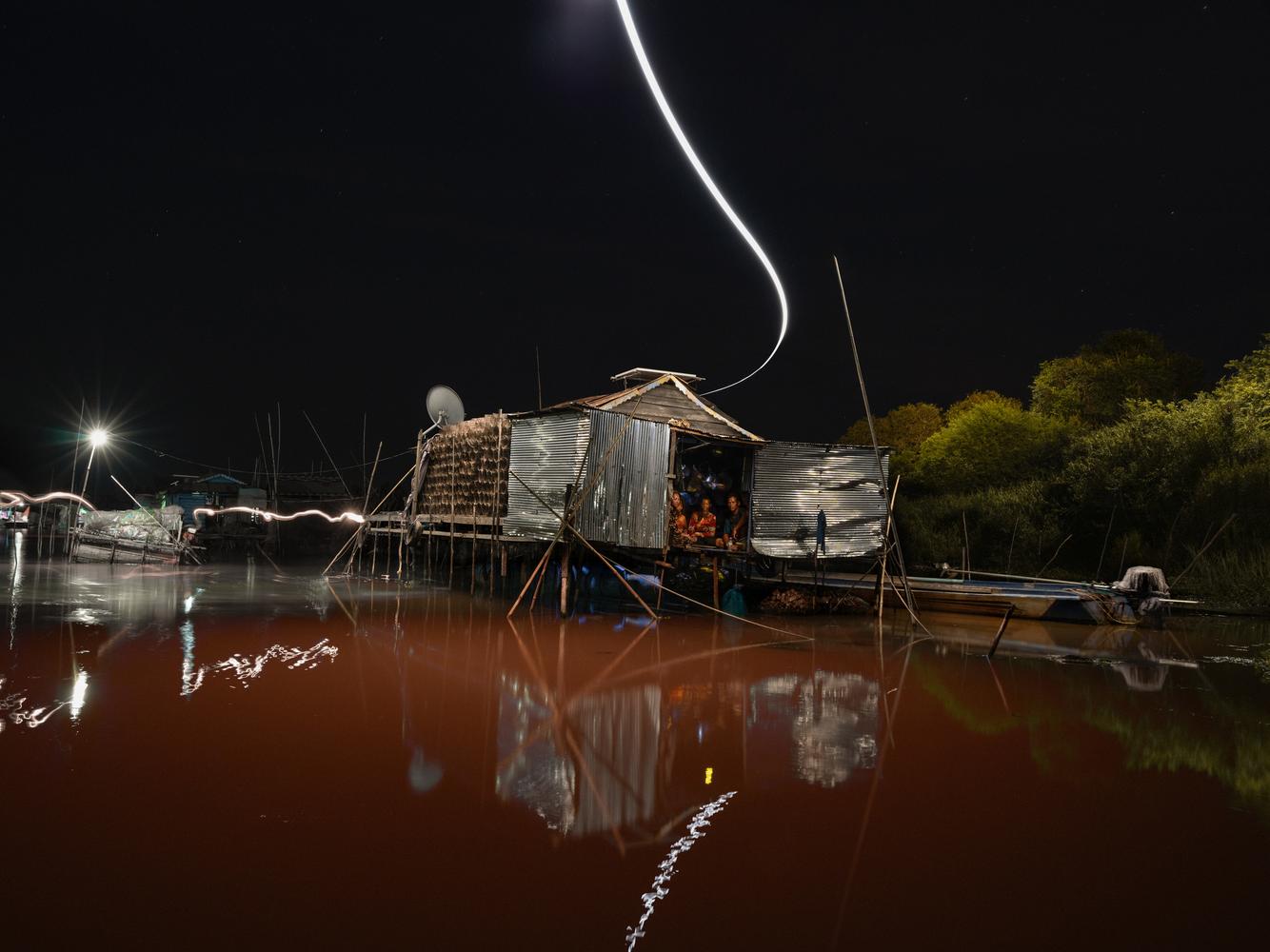
In the floating village of Peam Bang, a young family gather for an evening meal in their stilted home. I was struck by the sense of warmth in this scene, a simple joy of togetherness.
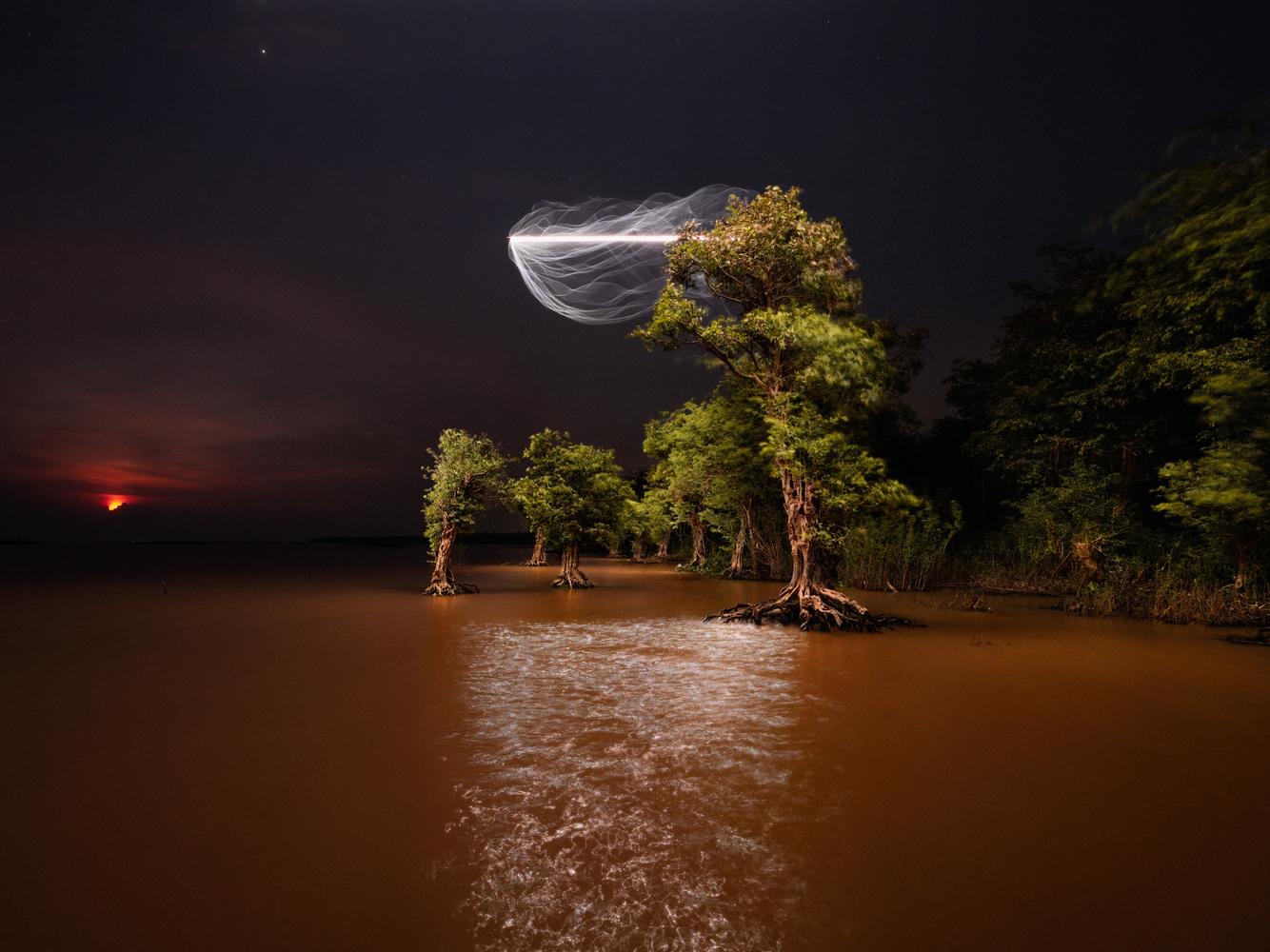
As night falls on the shores of Tonlé Sap, flooded forest trees stand illuminated against the dark sky. In the wet season, these trees would be almost submerged beneath the high water levels, but in the current dry season, even their roots are laid bare, a reminder of the extreme ebb and flow which happens every year.
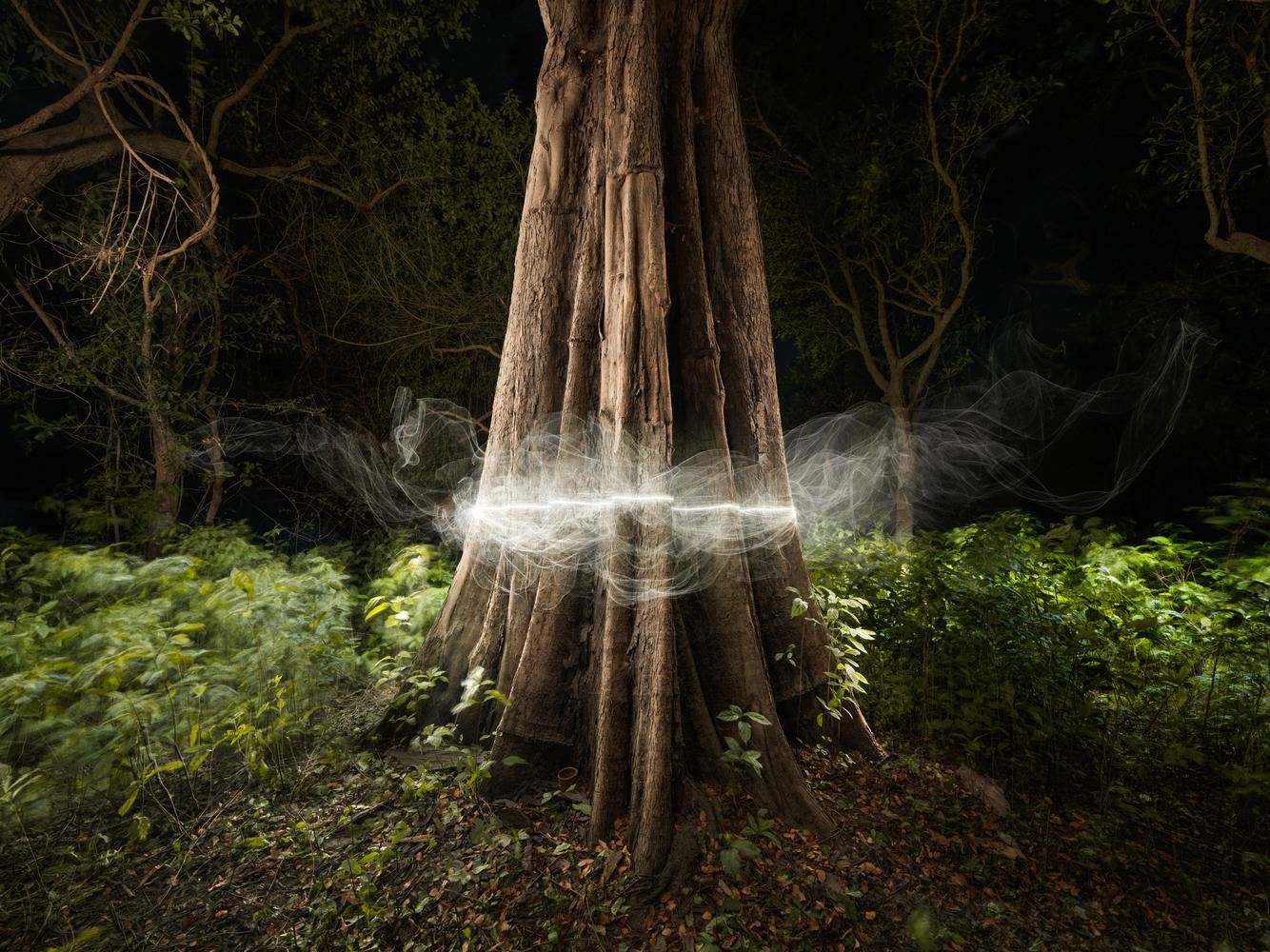
Near Phat Sandau in the heart of dense impenetrable jungle stands the colossal trunk of an ancient Roteang tree, so huge it can be seen from miles around. White lines visible as high as 15 feet mark the upper reach of water levels during the wet season.
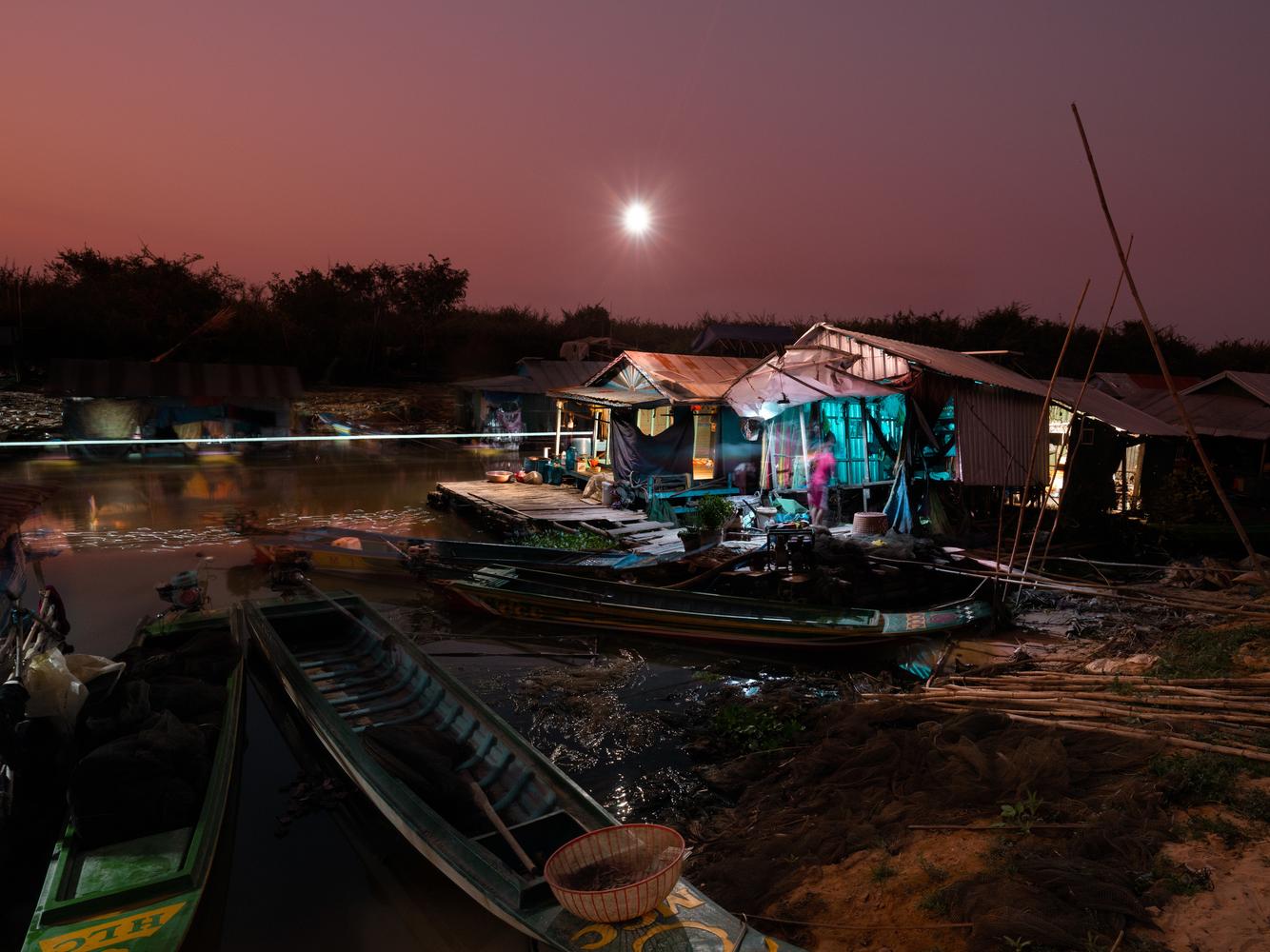
As twilight descends upon the village of Srey Chek, the rhythmic passage of boats creates visible movement among the floating houses. In this location, the absence of sanitation is palpable, with the lake water becoming the lifeline for everyday tasks, from bathing to washing dishes.

On our final day, we visited a gallery forest, situated on the receding shore of the lake. A lone tree stood out to me, and I was struck by its intricate and delicate form, slowly but resiliently growing over decades of wet and dry seasonal fluctuations.
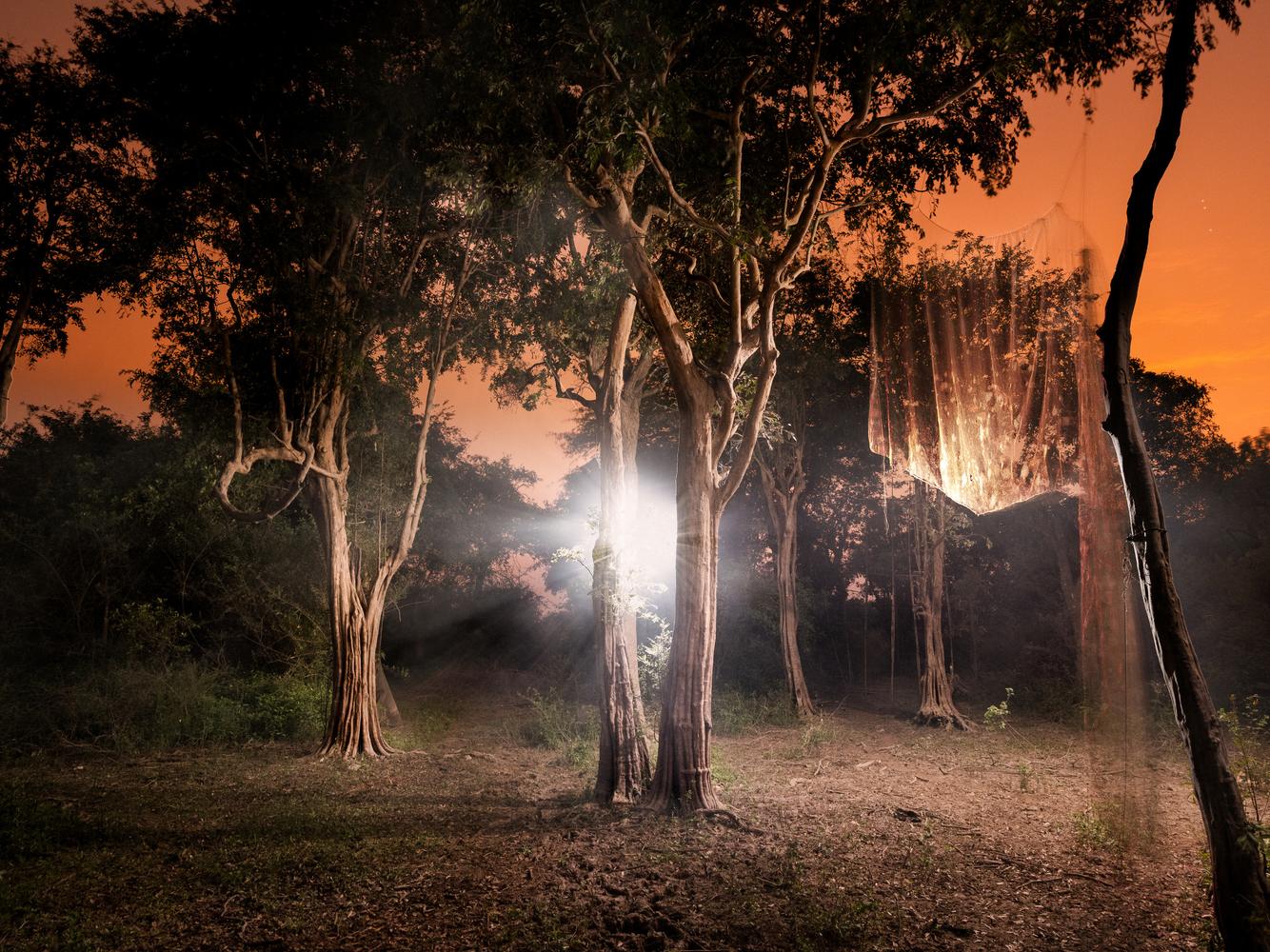
At Ou Ta Prok, an abandoned fisherman’s net hangs in the branches of the trees at the height of what was once the high-water level during wet season.
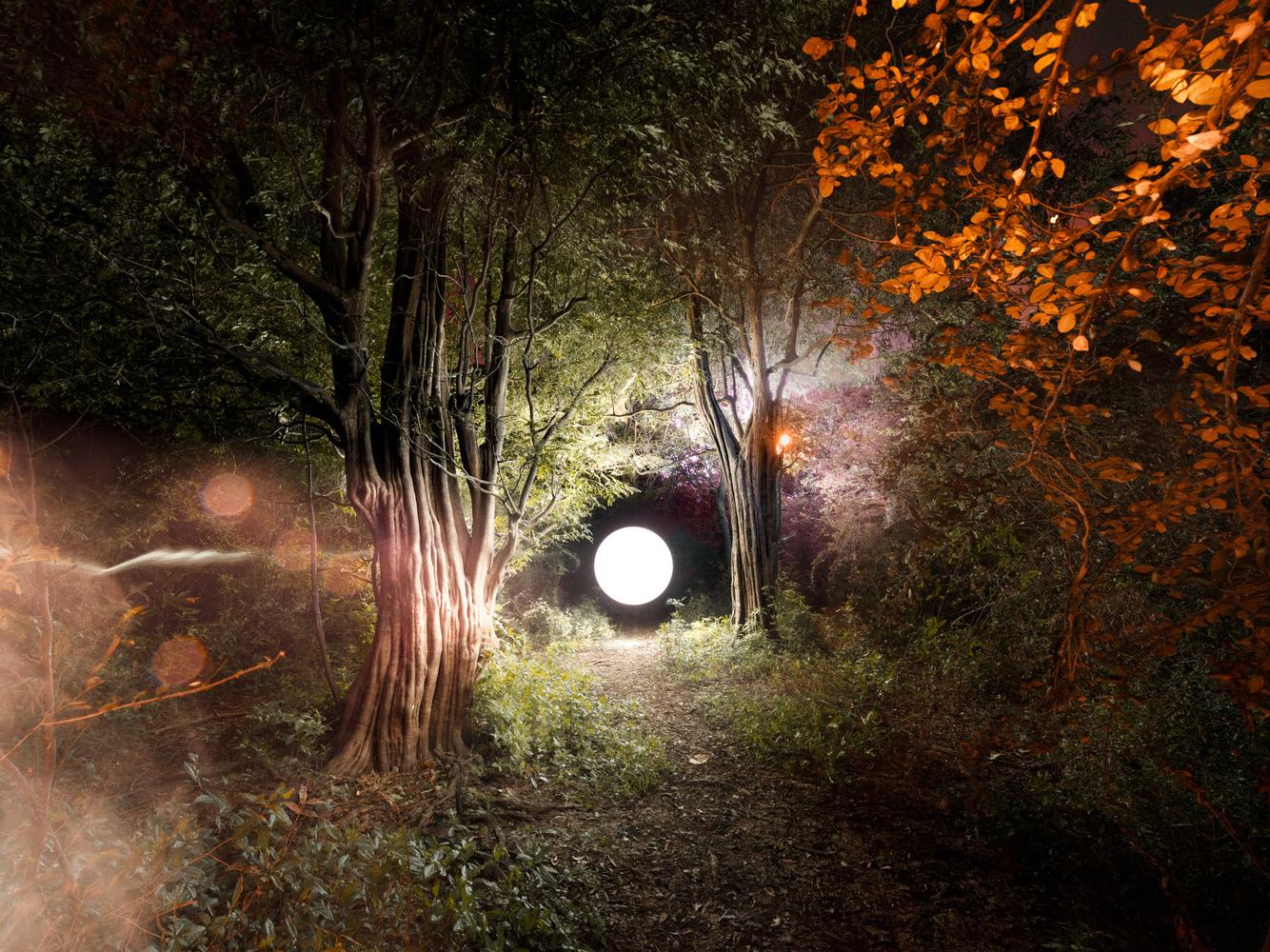
My light-painted orb illuminates a forest scene at Kampong Prak, providing a radiant focal point for an untamed and mysterious environment that is teeming with life.